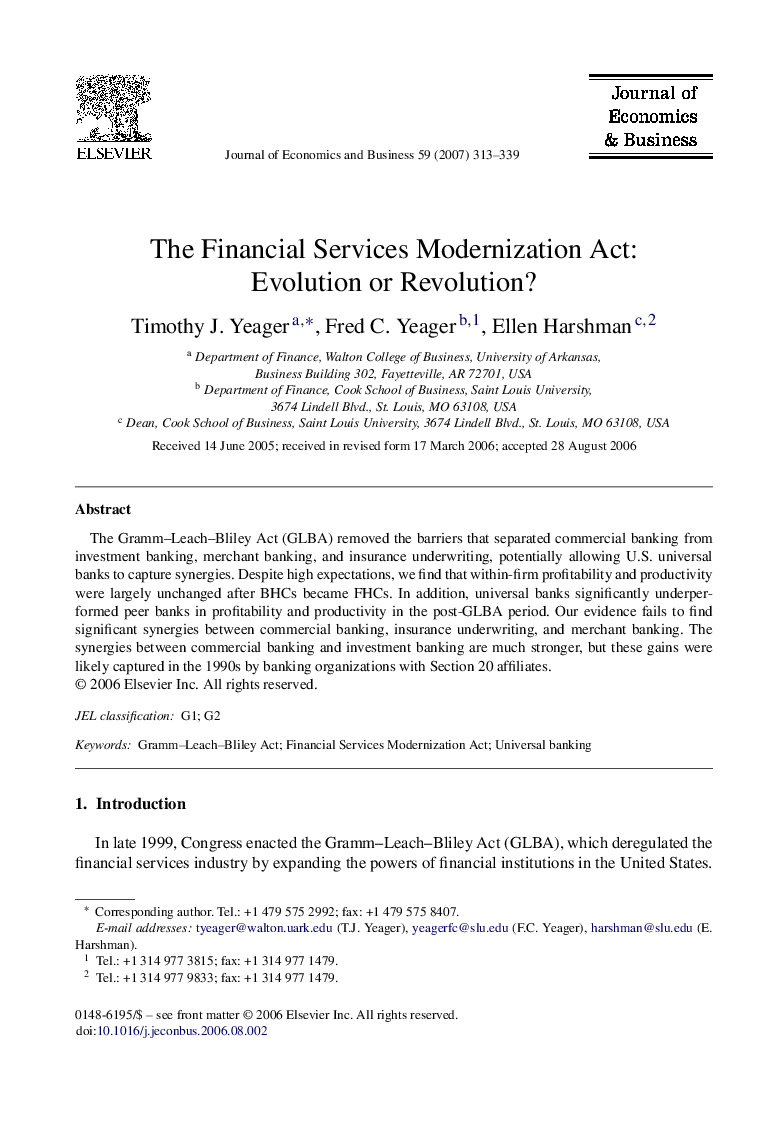| Article ID | Journal | Published Year | Pages | File Type |
|---|---|---|---|---|
| 958155 | Journal of Economics and Business | 2007 | 27 Pages |
The Gramm–Leach–Bliley Act (GLBA) removed the barriers that separated commercial banking from investment banking, merchant banking, and insurance underwriting, potentially allowing U.S. universal banks to capture synergies. Despite high expectations, we find that within-firm profitability and productivity were largely unchanged after BHCs became FHCs. In addition, universal banks significantly underperformed peer banks in profitability and productivity in the post-GLBA period. Our evidence fails to find significant synergies between commercial banking, insurance underwriting, and merchant banking. The synergies between commercial banking and investment banking are much stronger, but these gains were likely captured in the 1990s by banking organizations with Section 20 affiliates.
